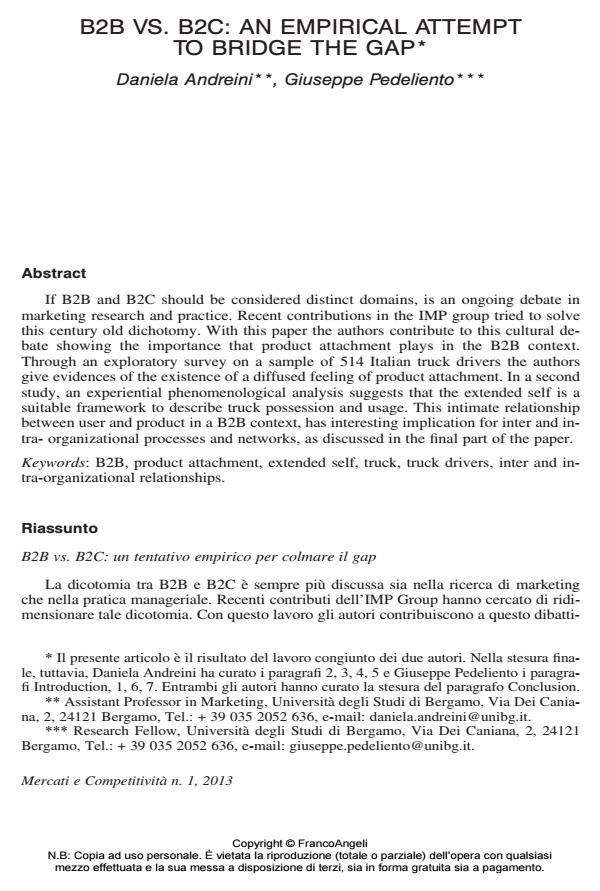B2B vs. B2C: an empirical attempt to bridge the gap
Journal title MERCATI E COMPETITIVITÀ
Author/s Daniela Andreini, Giuseppe Pedeliento
Publishing Year 2013 Issue 2013/1
Language English Pages 24 P. 73-96 File size 520 KB
DOI 10.3280/MC2013-001006
DOI is like a bar code for intellectual property: to have more infomation
click here
Below, you can see the article first page
If you want to buy this article in PDF format, you can do it, following the instructions to buy download credits

FrancoAngeli is member of Publishers International Linking Association, Inc (PILA), a not-for-profit association which run the CrossRef service enabling links to and from online scholarly content.
If B2B and B2C should be considered distinct domains, is an ongoing debate in marketing research and practice. Recent contributions in the IMP group tried to solve this century old dichotomy. With this paper the authors contribute to this cultural debate showing the importance that product attachment plays in the B2B context. Through an exploratory survey on a sample of 514 Italian truck drivers the authors give evidences of the existence of a diffused feeling of product attachment. In a second study, an experiential phenomenological analysis suggests that the extended self is a suitable framework to describe truck possession and usage. This intimate relationship between user and product in a B2B context, has interesting implication for inter and intra- organizational processes and networks, as discussed in the final part of the paper.
Keywords: B2B, product attachment, extended self, truck, truck drivers, inter and intra- organizational relationships.
- Analyzing Attachment and Consumers' Emotions pp.172 (ISBN:9781522549840)
Daniela Andreini, Giuseppe Pedeliento, B2B vs. B2C: an empirical attempt to bridge the gap in "MERCATI E COMPETITIVITÀ" 1/2013, pp 73-96, DOI: 10.3280/MC2013-001006